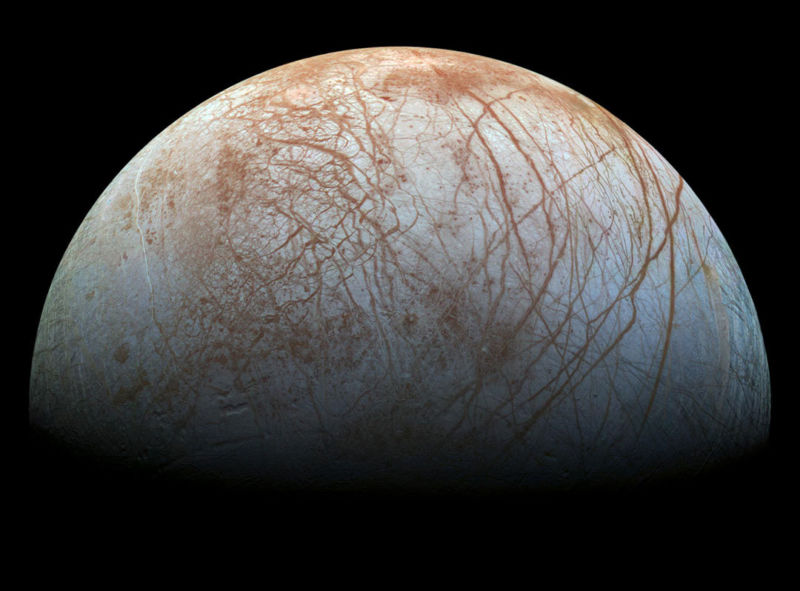On Thursday morning, NASA's Juno spacecraft swooped down to within 358 km of the surface of Europa, the large, ice-encrusted Moon that orbits Jupiter.
This flyby will provide humanity its closest look at Europa since the Galileo mission made several close flybys more than two decades ago. However, the Juno spacecraft will carry a more powerful suite of instruments and a far more capable camera than Galileo. So this should be our best look yet at the intriguing world.
Launched in 2011, Juno reached Jupiter in 2016 to closely study the composition of the Solar System's largest planet, as well as its powerful magnetosphere. After it successfully completed its primary mission in 2021, Juno's mission operators have begun using the probe to assess moons in the Jovian system, including Europa, Ganymede, and Io.
Given Juno's existing orbit and Jupiter's massive gravity field, the orbital dynamics of the Europa flyby are challenging, to say the least, and Juno had to make significant modifications to its trajectory.
"The relative velocity between spacecraft and moon will be 23.6 kilometers per second, so we are screaming by pretty fast," said John Bordi, Juno deputy mission manager at JPL. "All steps have to go like clockwork to successfully acquire our planned data, because soon after the flyby is complete, the spacecraft needs to be reoriented for our upcoming close approach of Jupiter, which happens only seven and a half hours later."
Scientists have long been curious about Europa, which is covered in ice but believed to have a vast ocean beneath the surface due to the moon's warm core. There is probably more liquid water in Europa's global ocean than exists on Earth, planetary scientists think. While the ice sheet is believed to be several kilometers thick, the Hubble Space Telescope has collected data that indicates geysers may be periodically ejected through cracks in this ice. Given the presence of water and heat, this ocean is considered to be a potential reservoir for microbic alien life.
Juno will bring new tools with which to study this ice sheet. For example, the spacecraft's microwave radiometer will look into Europa’s crust, obtaining data on its icy composition and temperature. This is the first time such data will have been collected to study the moon’s icy shell.
The visual imagery and scientific data will help inform NASA scientists who are completing assembly of the Europa Clipper, a large spacecraft due to launch in 2024 on a Falcon Heavy rocket. This mission will be dedicated to the study of the Moon, arriving in 2030 and performing more than 50 flybys at close range to gather data. Eventually the space agency would like to send a lander but wants to obtain data from the flyby missions first to assess the best location for landing, potentially near a water vapor plume, if they really exist.
Images should start returning from Juno's flyby of Europa in the next several days. NASA will post them here as they arrive.



3175x175(CURRENT).thumb.jpg.b05acc060982b36f5891ba728e6d953c.jpg)


Recommended Comments
There are no comments to display.
Join the conversation
You can post now and register later. If you have an account, sign in now to post with your account.
Note: Your post will require moderator approval before it will be visible.